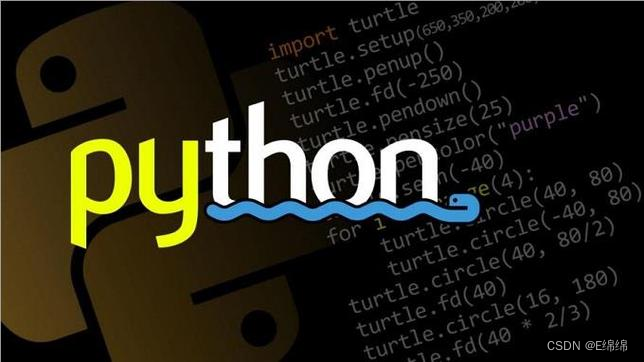
文章目录
- 一、正则表达式的基本概念
- 1. 元字符
- 2. 特殊序列
- 二、Python中正则表达式的使用方法
- 1. 导入`re`模块
- 2. 匹配(match)
- 3. 搜索(search)
- 4. 查找所有匹配(findall)
- 5. 替换(sub)
- 6. 分割(split)
- 三、常见操作与应用场景
- 1. 验证电子邮件地址
- 2. 提取电话号码
- 3. 替换敏感信息
- 4. 分割日志文件
- 四、实际应用示例
- 1. 网页数据抓取
- 2. 日志文件解析
- 结论
正则表达式(Regular Expression,简称regex)是一种强大的字符串匹配和操作工具,用于搜索、匹配和替换字符串。在Python中,re模块提供了正则表达式的支持。本文将深入探讨Python中的正则表达式,涵盖正则表达式的基本概念、常用正则表达式模式、Python中正则表达式的使用方法、常见操作与应用场景,以及一些实际应用示例。
一、正则表达式的基本概念
正则表达式是一种模式,用于描述和匹配字符串中的字符序列。通过使用特定的语法规则,可以构建复杂的模式来匹配需要的字符串。
1. 元字符
元字符是正则表达式中具有特殊意义的字符,用于构建匹配模式。常见的元字符包括:
.:匹配除换行符外的任意字符^:匹配字符串的开头$:匹配字符串的结尾*:匹配前一个字符零次或多次+:匹配前一个字符一次或多次?:匹配前一个字符零次或一次{n}:匹配前一个字符恰好n次{n,}:匹配前一个字符至少n次{n,m}:匹配前一个字符n到m次[]:匹配方括号中的任意一个字符|:匹配左右任意一个表达式():分组
2. 特殊序列
特殊序列是正则表达式中的一些特殊字符,用于匹配特定的字符类型。常见的特殊序列包括:
\d:匹配任何十进制数字,相当于[0-9]\D:匹配任何非数字字符,相当于[^0-9]\w:匹配任何字母数字字符,相当于[a-zA-Z0-9_]\W:匹配任何非字母数字字符,相当于[^a-zA-Z0-9_]\s:匹配任何空白字符,相当于[\t\n\r\f\v]\S:匹配任何非空白字符,相当于[^\t\n\r\f\v]
二、Python中正则表达式的使用方法
Python的re模块提供了丰富的正则表达式功能,包括匹配、搜索、替换等操作。
1. 导入re模块
使用正则表达式前需要导入re模块:
import re
2. 匹配(match)
re.match函数用于从字符串的开头匹配正则表达式。如果匹配成功,返回一个匹配对象;否则,返回None。
import repattern = r'\d+'
text = '123abc'match = re.match(pattern, text)
if match:print("Match found:", match.group())
else:print("No match found")
3. 搜索(search)
re.search函数用于在整个字符串中搜索匹配正则表达式的第一个位置。如果匹配成功,返回一个匹配对象;否则,返回None。
import repattern = r'\d+'
text = 'abc123def'search = re.search(pattern, text)
if search:print("Match found:", search.group())
else:print("No match found")
4. 查找所有匹配(findall)
re.findall函数用于查找字符串中所有匹配正则表达式的子串,返回一个列表。
import repattern = r'\d+'
text = 'abc123def456ghi789'matches = re.findall(pattern, text)
print("All matches:", matches)
5. 替换(sub)
re.sub函数用于替换字符串中所有匹配正则表达式的子串。
import repattern = r'\d+'
text = 'abc123def456ghi789'result = re.sub(pattern, '#', text)
print("Replaced text:", result)
6. 分割(split)
re.split函数用于根据匹配正则表达式的子串来分割字符串。
import repattern = r'\d+'
text = 'abc123def456ghi789'result = re.split(pattern, text)
print("Splitted text:", result)
三、常见操作与应用场景
正则表达式在文本处理和数据清洗中有广泛的应用,以下是一些常见的操作与应用场景。
1. 验证电子邮件地址
使用正则表达式验证电子邮件地址的格式。
import repattern = r'^[a-zA-Z0-9_.+-]+@[a-zA-Z0-9-]+\.[a-zA-Z0-9-.]+$'
email = 'example@example.com'if re.match(pattern, email):print("Valid email address")
else:print("Invalid email address")
2. 提取电话号码
使用正则表达式从文本中提取电话号码。
import repattern = r'\b\d{3}[-.]?\d{3}[-.]?\d{4}\b'
text = 'Contact us at 123-456-7890 or 987.654.3210'matches = re.findall(pattern, text)
print("Phone numbers:", matches)
3. 替换敏感信息
使用正则表达式替换文本中的敏感信息。
import repattern = r'\b\d{3}[-.]?\d{2}[-.]?\d{4}\b'
text = 'My social security number is 123-45-6789'result = re.sub(pattern, '###-##-####', text)
print("Anonymized text:", result)
4. 分割日志文件
使用正则表达式分割日志文件中的条目。
import repattern = r'\d{4}-\d{2}-\d{2} \d{2}:\d{2}:\d{2}'
log = '2021-01-01 12:00:00 Log entry 1\n2021-01-01 12:01:00 Log entry 2\n2021-01-01 12:02:00 Log entry 3'entries = re.split(pattern, log)
entries = [entry.strip() for entry in entries if entry]
print("Log entries:", entries)
四、实际应用示例
以下是两个实际应用示例,演示如何使用Python中的正则表达式处理文本数据。
1. 网页数据抓取
以下示例展示了如何使用正则表达式从网页源代码中提取所有链接。
import rehtml = """
<html><head><title>Example Page</title></head><body><a href="http://example.com">Link 1</a><a href="https://example.org">Link 2</a><a href="http://example.net">Link 3</a></body>
</html>
"""pattern = r'href="(http[s]?://[^"]+)"'
links = re.findall(pattern, html)
print("Links:", links)
2. 日志文件解析
以下示例展示了如何使用正则表达式解析日志文件并提取关键信息。
import relog = """
2021-01-01 12:00:00 INFO User login: user1
2021-01-01 12:01:00 ERROR Failed login attempt: user2
2021-01-01 12:02:00 INFO User logout: user1
"""pattern = r'(\d{4}-\d{2}-\d{2} \d{2}:\d{2}:\d{2}) (INFO|ERROR) (.+)'
matches = re.findall(pattern, log)
for match in matches:timestamp, level, message = matchprint(f"Timestamp: {timestamp}, Level: {level}, Message: {message}")
结论
正则表达式是处理文本数据的强大工具,可以用于搜索、匹配、替换和分割字符串。在Python中,re模块提供了丰富的正则表达式功能,使得文本处理变得更加简单和高效。在本文中,我们详细探讨了正则表达式的基本概念、常用正则表达式模式、Python中正则表达式的使用方法、常见操作与应用场景,以及一些实际应用示例。希望这篇文章能帮助你更好地理解和应用Python中的正则表达式,从而在实际项目中实现更高效的解决方案。



















